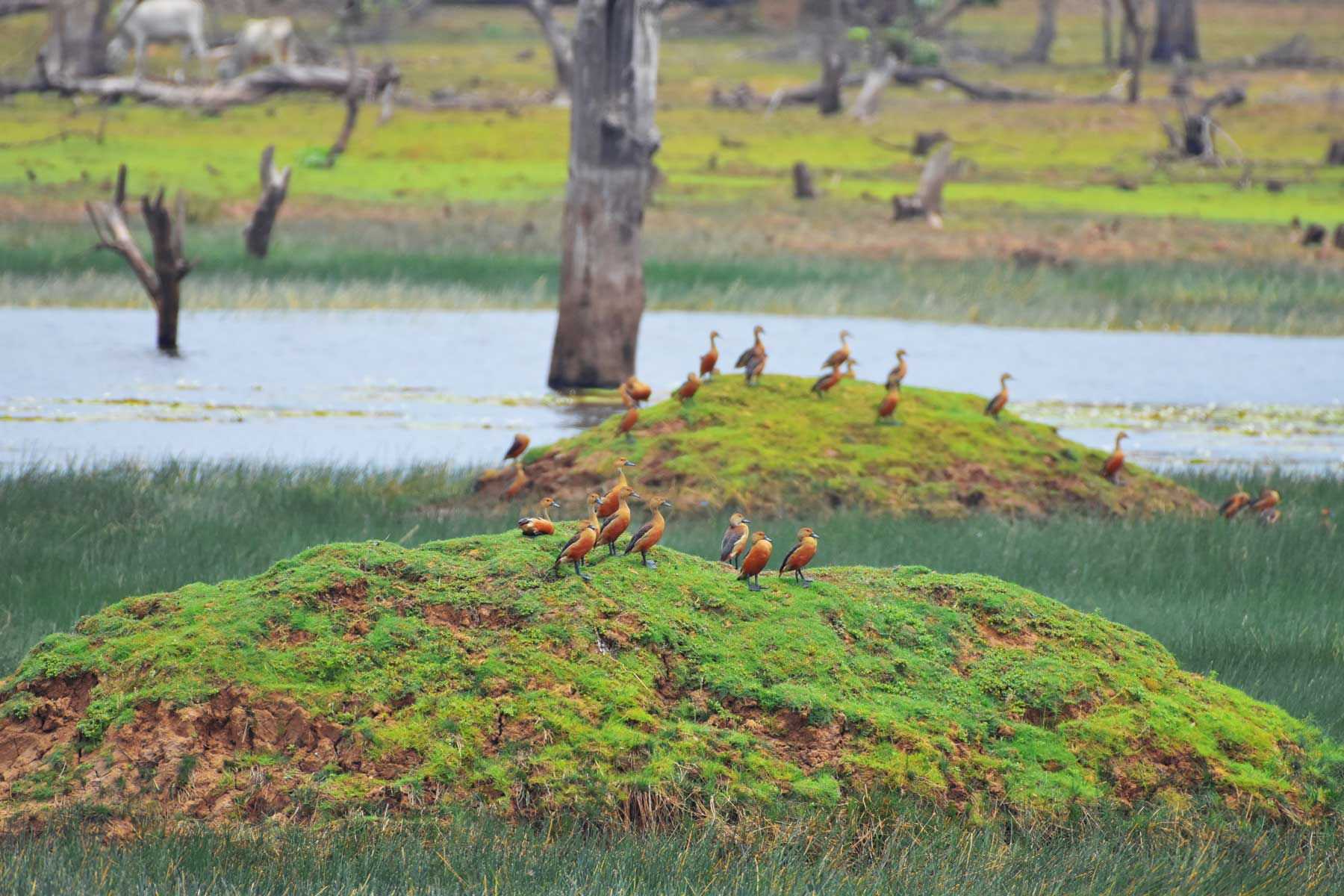Nauradehi Wildlife Sanctuary is one of thelargest sanctuaries in India, which covers 1197.04 km² area in three districts, viz., Sagar, Damoh and Narsinghpur, of Madhya Pradesh. The entire Sanctuary is situated on a plateau, forming part of upper Vindhyan range and It has a connecting forest patch with VeeranganaDurgawati Sanctuary in Damoh district towards east which extends up to Bandhavgarh National Park. The forest is spread over the southern area of the Vindhya Range of hills in which the Bandhavgarh National Park and Panna National Park are also located.
Nauradehi’s unique geomorphology and the diverse deciduous mixed forest together provide the best habitats conditions for a large number of wild life species.
It is reflected by the presence of more than 250 species of animals, birds, reptiles, amphibians and fishes. The fauna is represented by such magnificent mammals as tiger, panther, sloth-beer and wild dog among carnivores and blue bull, chinkara, spotted deer, sambhar and black buck among herbivores.
The rich avifauna has more than 170 species and consist of variety of herons, egrets, storks, teals, hawks and vultures, pheasant, partridges and quails, pigeons and doves, parakeets, cuckoos, owls, fly-catchers, wood peckers, mainas, larks and weaver birds. Crocodile is the threatened species of reptiles found in Bamner river. A variety of snakes fishes, frogs, crabs, crustaceans, lobsters, planktons are also found in the sanctuary.
Nauradehi also has 92 varieties of trees, 49 varieties of shrubs and herbs, 18 varieties of climbers and creepers, 35 varieties of grasses and bamboos.
Nauradehi Sanctuary is located at an elevation of 400 m (1,300 ft) to 600 m (2,000 ft) above mean sea level. Three fourth of WLS falls in the Yamuna [Ganges] and one fourth of the WLS falls in the Narmada basin. The north flowing Kopra River, Bamner River, Bearma River, which are tributaries of the Ken River, are the major rivers of this protected area. Some smaller streams flow southerly to the Narmada river in the south of the sanctuary.
Precipitation - 1,200 millimetres
Avg. summer temperature - 42 °C (118 °F)
Avg. winter temperature - 5 °C (41 °F)
Geology, Rock and Soil:
The Vindhyans, Lametas and Deccan Trap the chief rock formations met with-in Sanctuary limits. However, it is the upper Vindhyan sand stone formation which occurs extensively and occupies more than seventy five percent area of the tract.
Soils:
The variation in the geological formations, topography, drainage and soil eroding factors, give rise to a variety of soil types. The type of soil, interacting with other climatic and biotic factors, determines the qualitative and quantitative distribution of forests. Broad soil types met in the Sanctuary are:
- Red Soil
- Black Soil
- Alluvial Soil


